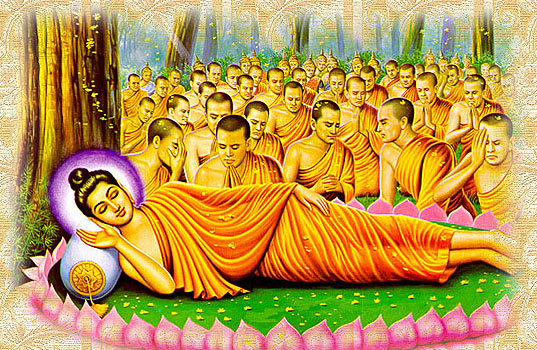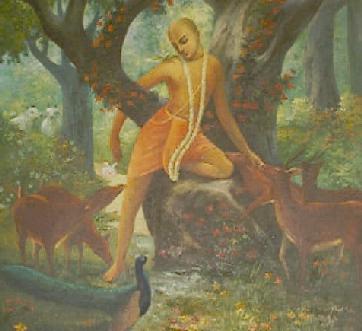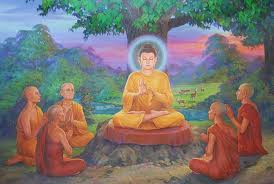“Mindfulness Mediation” or Vipassana Meditation is a capacity for heightened present-moment awareness that we all possess to a greater or lesser extent. “Mindfulness” are particularly effective, because they aim at changing the underlying beliefs and patterns of negative thinking that create the anxiety. Essentially, you learn how to focus mindfulness on the underlying core emotions and make them the primary object of your meditation. Generally, it is what is not seen that has most power over you, and mindfulness meditation is directed at exploring the structure of our inner feelings in great detail.
Training this capacity seems to have a quieting effect on brain areas associated with our subjective appraisal of our self. By considering thoughts and feelings as transitory mental events that occur, but are separate from the self, people are able to lessen their hold on their worries and positive mental health outcomes follow. Mindfulness can be as simple as just watching the breathing.
Even the most basic tasks such as washing the clothes can consume so much emotional energy that it simply becomes easier to give up. So much emotional energy is expended in this endless worrying that we are left feeling completely drained and fatigued, which makes us even less able to cope.
However, what is even more important than the thoughts or beliefs at the core of anxiety conditions are the emotions, the feeling energy that empowers those thoughts and beliefs. This is what we address in Mindfulness Meditation.
When you develop a mindfulness-based relationship with your inner emotions you set up a completely different inner environment that greatly facilitates transformation, resolution and healing of the emotional constructs of anxiety and fear. The simple fact is that reactivity inhibits change, while mindfulness promotes change and healing. You first learn to recognize the impulse to react with fear or panic as it arises, and to respond at a very early stage to the impulse with mindful-attention. This simple action stops the reactivity proliferating into worry and negative thinking, and opens up a brief moment of choice, a space before the reaction takes off. This is the beginning of the de-conditioning process. With practice you can develop and lengthen this space, especially in mindfulness meditation sessions, which become practice grounds for developing new ways of responding to your emotions and the associated external situations.
As you develop this space, what is called the “therapeutic space of mindfulness,” you create an opportunity in which the trapped emotional energy that powers the reactions can unfold, unwind and become much more malleable. This inner freedom allows emotions to change and transform, which eventually leads to their resolution. We all know the importance of “facing our feelings.” Well Mindfulness Meditation provides the method and details of how to do that, and in a way that leads to beneficial change, rather than simply re-experiencing the emotional reactivity. It is a well-established fact that Exposure Therapy, in which you deliberately make controlled contact with your fear or phobia, is an essential part of healing, but the whole point of such therapy is not to simply re-experience the trauma, but to experience it differently. Mindfulness allows you to do this very effectively, and with your mind will rapidly learn new perceptions and new pathways of experiencing that are not based on emotional reactivity but on balanced responsiveness. This in turn naturally leads to more functional and more positive thinking and more useful core beliefs that are empowered by positive emotional energy, rather than the previous negative energy.
How to Do Mindfulness Meditation:
1. The techniques of mindful meditation is not new. You just find a quiet and cozy place. Sit in a chair or at the floor along with your head, neck and back straight but not stiff.
2. Try and set aside all thoughts of the past and the longer term and stay within the present.
3. Discover your breathing, targeting the feeling of air moving out and in of your body as you breathe. Feel your belly rise and fall, the air enter your nostrils and leave your mouth. Listen in on the way in which each breath changes and is different.
4. Watch every thought come and go, whether or not it’s a worry, fear, anxiety or hope. When thoughts arise to your mind, don’t ignore or suppress them but simply note them, remain calm and use your breathing as an anchor.
5. If you end up getting over excited to your thoughts, observe where your mind went off to, without judging, and easily return for your breathing. Remember to not be hard on yourself if this occurs.
Benefits of Mindfulness Meditation:
Mindfulness gives rise to insights which ripen into wisdom, because the more deeply and clearly we are able to observe the reality of our mind body and world, the more we will understand how and why things are as they are.
Here are 10 benefits to practice mindfulness meditation.
- Increases grey-matter density in the hippocampus (an area of the brain known to be important for learning and memory) and in structures associated with self-awareness, compassion and introspection.
- Reduces Anxiety Disorders, Including Generalized Anxiety Disorder (GAD)
- Reduces Sleep Problems
- Improve focus, concentration, and precision.
- Improves Relationship Issues
- Enhance the quality of communications and relationships.
- Deepen peace of mind and sense of flow
- Deepen insight and intuitive wisdom.
- Awaken more authenticity, heart, soul, and caring in our lives and work.
- Increases strengthen faith and self-confidence.
 Follow
Follow



